Are drinks packages worth it? 18 of cruising’s biggest questions, answered
Ever wondered how to score a seat at the Captain’s Table, or whether it’s worth splurging on a balcony suite or premium drinks package? We’ve got you covered with these answers to some of the most common questions about cruising.
Why is champagne used to launch cruise ships?
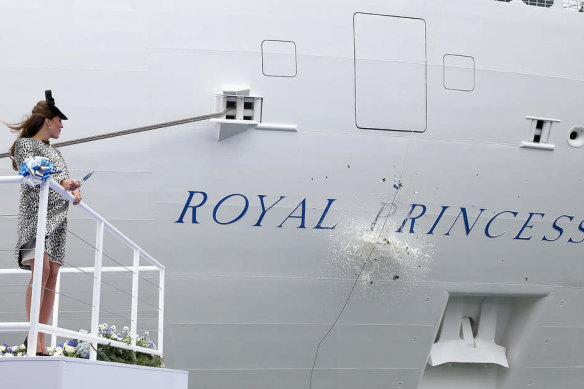
Princess Catherine, then known as the duchess of Cambridge, does the honours during the ceremonial bottle smash for the Royal Princess in 2013.Credit: Getty Images
In ancient times, ship launches were marked by special ceremonies, such as animal sacrifice, by which it was hoped to attract the favour of the gods and ensure the safety of both vessel and crew.
In medieval Europe, the spilling of blood was replaced by the sprinkling of holy water in an echo of the Christian rite of baptism. The appointment of a ship’s godmother has similar religious origins.
Later, as religious ceremonies declined, other liquids were used, particularly wine, which was spilled on the deck. Champagne was introduced relatively recently, some say at the launch of HMS Royal Arthur by Queen Victoria in 1891.
Champagne soon caught on, no doubt because of its associations with prestige and celebration, and more explosive visual impact.
Superstitious sailors consider unchristened ships unlucky. Titanic wasn’t christened, but then again nor was any ship of the White Star Line, many of which served long and successfully.
Champagne bottles are relatively difficult to break. The launch of the USS Los Angeles in 1974 required 13 goes. In 2007, the then Duchess of Cornwall failed to break her champagne bottle over Cunard’s Queen Victoria, and the British press gleefully reported a subsequent norovirus outbreak among passengers as the Curse of Camilla.
Can you summarise the main types of cruise ship?
Mega-ships from Carnival, Costa, MSC, Norwegian and Royal Caribbean carry between 4000 and nearly 7600 passengers and are floating holiday resorts. They’re family-friendly and feature a wide range of entertainment and activities, kids’ clubs, party nights and water slides. The basic fare is low-cost, but you’re charged for many extras on board.
But they also have ships that carry about 2500 passengers (large ships). Celebrity and Holland America are more premium in this niche. Those looking to upgrade while downsizing might consider Azamara, Oceania and Viking, which offer a premium product on ships of around 1000 passengers.
Luxury ships generally have fewer than 1000 passengers. They don’t have the same range of on-board activities, but still offer several restaurants, evening entertainment and enrichment programs. Examples include Regent Seven Seas, Scenic, Seabourn and Silversea. Fares are more inclusive. The leaning is towards adult-oriented educational and cultural experiences.
Expedition ships from companies such as Coral Expeditions, Lindblad, Ponant, Seabourn and Silversea carry under 500 passengers and have little distraction on board beyond lectures and perhaps modest evening shows. They sail to remote destinations, with excursions by Zodiac and a big focus on landscapes, wildlife spotting and wilderness activities such as kayaking and hiking.
Are there any adults-only cruise ships?
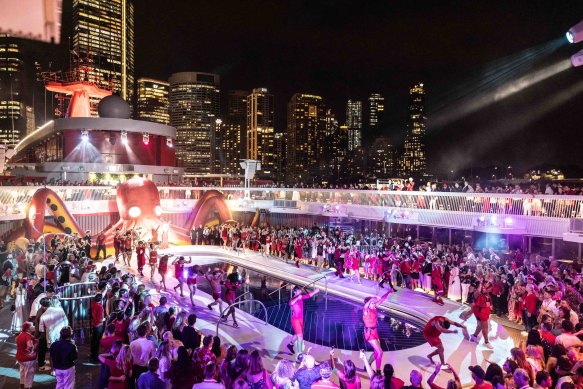
Adults only cruising with Virgin Voyages.
If shrieks of childish joy make you shrivel like a snail under salt, then you’d best avoid large- to mega-ships. They’re all family friendly and kid-chaotic, although some do have sectioned-off adults-only retreats.
You won’t need to worry much on small luxury, expedition or river ships. Some have age restrictions and few have any child-oriented facilities, so the only kids you’ll encounter are likely to be the more mature, quiet type of teenager, particularly if you sail out of school holiday times.
For the truly allergic, there are indeed adult-only options. Viking Cruises has an 18-plus policy and offers the widest choice of destinations. It favours quieter, culture-minded travellers and has an educational ethos.
If adults-only suggests something more exciting, then Virgin Voyages is also 18-plus, with a younger demographic and ships that promote parties, drag shows and risque entertainment.
Your only other options are British lines. Marella Cruises has one adults-only ship, Marella Explorer II. P&O Cruises (the more upmarket UK version, quite different from P&O Cruises Australia) operates two 18-plus ships, Arcadia and Aurora.
Meanwhile, luxury line Saga Cruises is unique for its 50-plus age policy for anyone who makes a booking, although companions can be a sprightly 40-plus.
Is paying for a balcony cabin worth the extra money?
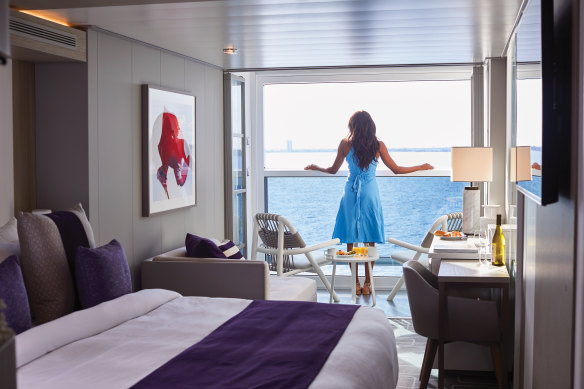
Worth the splurge? Celebrity Edge’s Infinite Veranda Stateroom.
I find cruise-ship balconies overrated, if not next to useless. Most are too small, too hot, too cold or too windy to be comfortable. I seldom use balconies, since ships have a multitude of nicer or more entertaining places to sit.
Balconies won’t get you immersed in scenery, either. You’re best out on deck for port arrivals or scenic sailings because top decks benefit from 360-degree views. Or best in an observation lounge, where you get an elevated forward outlook – and drinks.
That said, there are sun-lovers, fresh-air fiends and anti-social types who love perching on their balconies like guillemots on a cliff face, so whatever floats your boat.
You pay a premium for balconies, however, so ask yourself if you’d be better off without – or would rather spend the extra on something else. The key question is how much time you’re really going to spend on this tiny real-estate space.
If you’re keen to chitchat, pool-splash, bar-hop and buffet-browse, the answer is probably not much. If you’re always out exploring on shore, ditto. You could use the same criteria to judge what cabin category to book: is the upgrade a needless spend?
Are drinks packages on cruise ships good value for money?
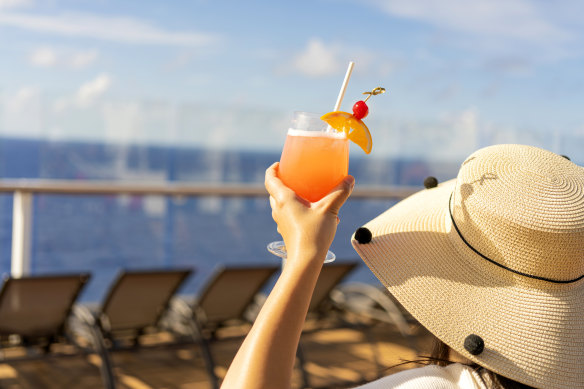
The cost of drinks packages and individual drinks varies widely across cruise lines.Credit: Getty Images
This is hard to answer without a maths degree and crystal ball, since each ship’s drinks package covers a different array and quality of drinks. The cost of the package and individual drinks also varies widely.
But you want an answer, so here goes. Drinks packages are only worth it if you have a taste for fancy premium cocktails, or intend to down serious amounts of alcohol on a daily basis. Also, you nearly always have to buy two packages a cabin, so your travelling companion needs to be a hearty drinker as well to maximise value.
Note that although drinks packages are charged on a per-day basis, you’ll have to buy a package that covers the whole cruise, so consider too how much time you’ll be spending off the ship.
If you think you’ll only have two or three drinks a day – especially just wine or beer – you’re better off paying for them individually. On budget ships however, drinks packages also cover specialty coffee and soft drinks, so you’ll need to take those into account.
Upmarket cruise lines offer house wines and beer with meals anyway, although a drinks package will get the fussy a better range of both.
What are some unusual rivers I could cruise?
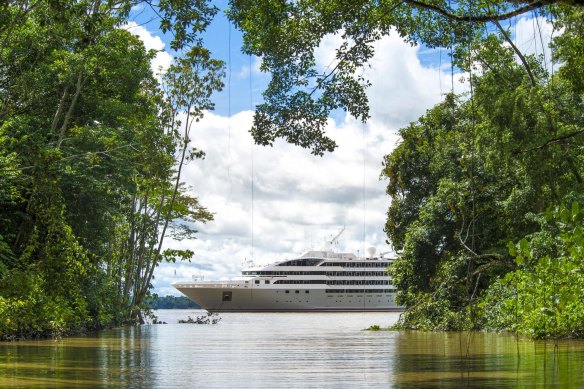
Cruise down the Brazilian Amazon with Ponant.
The Rhine and Danube are by far the most popular river-cruise destinations, but you can cruise on more than 50 rivers across all the inhabited continents.
Even in Europe, the range of rivers might surprise you. Viking sails on the scenic, culture-dense Elbe River in Germany and Czechia, and Noble Caledonia on the Oder River in Germany and Poland.
CroisiEurope features interesting rivers such as the chateaux-lined Loire in France, canals in Belgium and the Netherlands, the Sava and Tisza in Hungary, and Guadalquivir in Spain.
The US is also dense in river-cruise choices beyond the big-name Mississippi and Columbia rivers. American Cruise Lines and American Queen Voyages are the two main players, and operate cruises on the Great Lakes and rivers such as the Ohio, Illinois, Tennessee-Tombigbee Waterway and Intracoastal Waterway.
In South America, you can cruise the Peruvian Amazon; the Brazilian Amazon is tackled by small ocean expedition ships such as those of Ponant. The Gambia, Senegal and Chobe rivers are adventurous African destinations.
In Asia, Pandaw sails the Brahmaputra in India, Red River in Vietnam, and less-frequented Upper Mekong in Laos. And don’t forget you can cruise our own Murray River in Victoria and South Australia. Bon voyage.
Are cruise ships accessible for people with a disability?
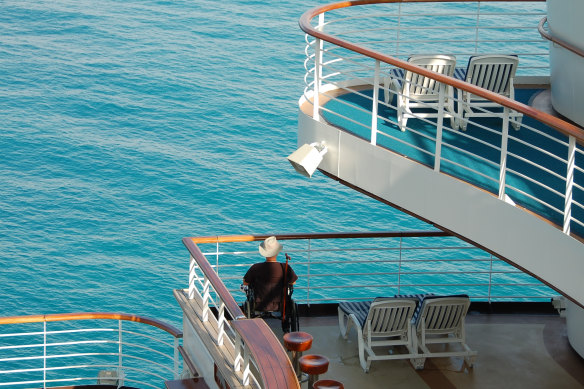
Cruising is becoming more accessible.Credit: Getty
Many cruise ships are increasingly wheelchair accessible and, given you don’t have to constantly change hotel rooms every night, can provide a relatively easy way to travel.
Older and expedition cruise ships are less likely to be accessibility compliant, and parts of every ship will be inaccessible to wheelchairs. However, new ships are increasingly all-ability friendly, and nearly all have accessible cabins.
Check the accessibility page of cruise line websites; some have a dedicated information phone number.
You’re best off on large ships from companies such as Celebrity, Disney, Holland America, Norwegian, Princess and Royal Caribbean.
Those lines also have systems for the visually impaired. Holland America and Princess cater to the hearing impaired with text telephones and cabins fitted with visual or vibrating alarms and doorbells.
Cruise lines do not supply wheelchairs, so inquire about the dimensions of corridors, doorways and accessible shower areas. Avoid cruises with many tender ports, as tenders either can’t accommodate wheelchairs, or might not do so owing to sea conditions.
Cruise lines have little control over conditions on shore, although Celebrity Cruises has a strong emphasis on wheelchair-accessible excursions and coaches. Consider booking an independent tour with a specialist local company, or a wheelchair-adapted taxi.
Which cruise lines are the eco-friendliest?
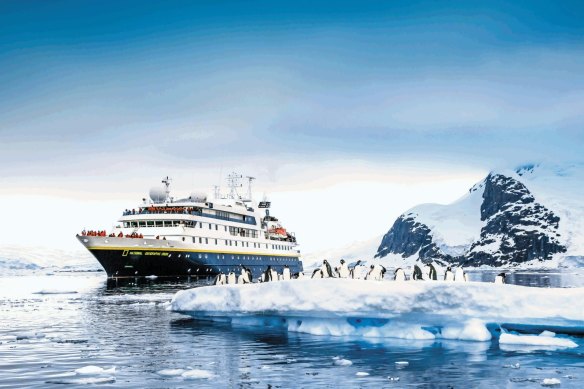
Lindblad has offered carbon-neutral cruises since 2019.Credit: Ralph Lee Hopkins
Let’s be honest: if you’re a committed eco-warrior you won’t be cruising. In fact, you’ll probably be picketing a cruise terminal. Good for you – public pressure can force big business to change.
For the rest of us, the somewhat good news is that cruise lines have been introducing better eco-technologies such as energy-efficient scrubbing, hybrid engines, waste recycling systems and solar panels. Many have banned plastics and started sourcing more local food.
Don’t get starry eyed. Such efforts don’t magic away cruising’s significant environmental impact. Your cruise choices might help, however. Select a small ship, since most run on cleaner marine gas oil rather than heavy fuel oil. And a newer one, for more up-to-date sustainability systems.
Your best bet is a small expedition ship. Lindblad has offered carbon-neutral cruises since 2019, and Ponant has some ships propelled by LNG that have zero emissions when in electric hybrid mode.
Hurtigruten has been setting new standards for eco-cruising, and polar specialist Aurora Expeditions has just become a Certified B Corporation for its environmental performance.
As an individual, you can reduce your footprint by controlling your cabin lighting and air-conditioning, reducing overall consumption – surely you can reuse that towel? – and wisely choosing shore excursions.
Do modern cruise ships ever sink?
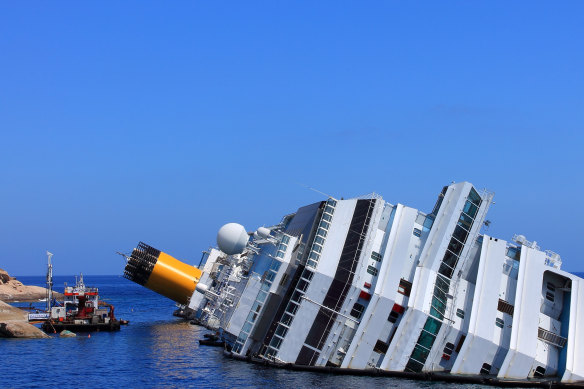
Costa Concordia sunk after it struck rocks off Italy in 2012.Credit: Getty Images
In the 112 years since the Titanic tragedy, 24 cruise ships have sunk through acts of war, hijacking, accidents or human error. But in this millennium, only four cruise ships have sunk while carrying passengers.
In 2007 MV Explorer hit an iceberg off Antarctica. All 153 passengers and crew clambered into lifeboats and drifted for five hours until rescued by another cruise ship. That same year, Sea Diamond ran aground off Santorini with the loss of two lives.
The best-known disaster is the sinking of Costa Concordia after it struck rocks off Italy in 2012. Although 4220 people were rescued, 32 people died. And in 2015, a storm downburst capsized Eastern Star on the Yangtze River. It sank in minutes; only 12 of 454 passengers survived.
Last year alone, 31.5 million cruise passengers sailed and none were on a sinking ship. Modern cruise ships are very stable, strictly regulated and maintained, have state-of-the-art navigation systems, and try to avoid bad weather.
What are the odds? Well, you should worry more about traffic accidents, bee stings, lightning strikes or sunstroke. You have a far greater chance of being killed by a kangaroo: about one in 8 million, according to The Nature Conservancy Australia.
How can I get a seat at the Captain’s Table?
Bad news. Having dinner with a ship’s captain isn’t a matter of your charm, talent or manipulative ability. Deep pockets help: you’ve a better chance if you occupy a top suite or are a loyalty customer.
Otherwise, you may be picked if it’s your birthday. Or if you’re a travel writer or agent or a VIP – perhaps you’re there to launch the ship? Otherwise the pick is random but leans towards well-coiffed solo travellers.
Honestly, I don’t get the desire to dine with the captain. Social snobbery, presumably. Or understandable curiosity. And yet the captain’s table invariably has stiff formality and cautious cocktail-party conversation.
Captains aren’t glamorous. They went to marine college, peer at charts all day long, and have great technical knowledge and numerous worries. They represent the cruise line. None of that makes them good conversationalists.
I’ve only met two entertaining captains, Cunard’s Kit Rynd and Star Clippers’ Sergey Utitsyn. Some ships offer tours with the chief engineer or head chef, who are usually more entertaining. Some ships, especially expedition vessels, have an open bridge policy that allows you to chat with various officers. But the truth is, waiters are the ones most worth talking to.
Cruise ships are divided into classes, but what does that mean?
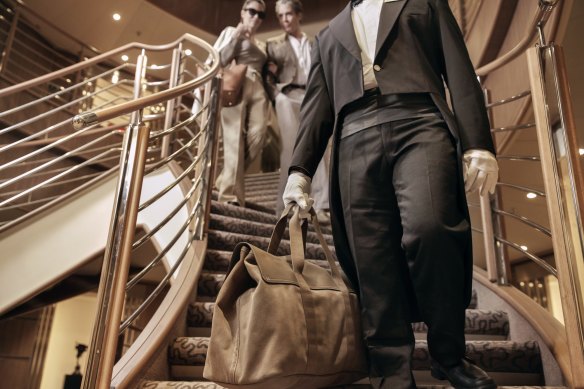
Butlers and bubbles on Silversea’s Muse class.Credit: Luca Locatelli
Class doesn’t refer to amenity or comfort standards, such as business or economy class on an aeroplane, but to the type of vessel.
Cruise companies regularly develop reimagined versions of previous ships that maintain the same brand look and facilities but have been redesigned in various ways. Usually, they’re bigger and have more advanced technologies.
The class is often named for the first ship in the series, such as Silversea’s Muse class, named after Silver Muse.
Sometimes the changes are subtle, but different vessel classes can make a big difference. Don’t assume all ships from the same company are similar, or will all suit your needs.
For example, if you’re after a mega-ship experience with multiple dining and entertainment choices and decks loaded with swimming pools, zip lines and waterslides, then Royal Caribbean’s latest Oasis-class ships provide.
But Royal Caribbean has several other ship classes: more modest Vision-class ships were built in the 1990s and carry fewer than 2500 passengers.
If you like a certain ship, however, you can hop aboard another of the same class and be sure of a near-identical experience. Royal Caribbean has four other Oasis-class ships, and Silversea’s Silver Moon and Silver Dawn are both modelled on elegant Silver Muse.
What are knots and nautical miles?
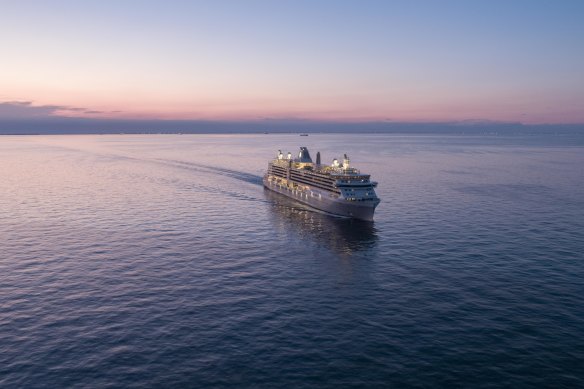
An international nautical mile is one minute of latitude and, miraculously, is a measurement the whole world agrees upon.Credit: Silversea Cruises
Every cruise passenger enjoying a day at sea expects the captain to make a midday announcement regarding the ship’s location and speed, but most of us remain baffled by the measurements he or she uses.
A nautical mile is slightly longer than a land-based mile, to be exact 1.1508 miles or 1.852 kilometres. The reason for the difference is that sailors (and airline pilots) use latitude and longitude as co-ordinates, as these take into account the Earth’s curvature, which becomes important over long distances.
An international nautical mile is one minute of latitude and, miraculously, is a measurement the whole world agrees upon, including the United States and United Kingdom. There’s no such thing as a nautical kilometre.
Knots measure speed, with one knot the equivalent of one nautical mile per hour, or 1.852 kilometres an hour. It derives its name from the knotted ropes once used by mariners, which they let out behind their ships to estimate speed.
Fortunately, cruise-ship captains tell you the water depth in metres. The older measurement is the fathom, originally the span of a sailor’s outstretched arms, now six feet or 1.8288 metres. It isn’t a recognised international standard, and only the United States continues to use it on nautical charts.
What’s the difference in river cruising in America, Europe and Asia?
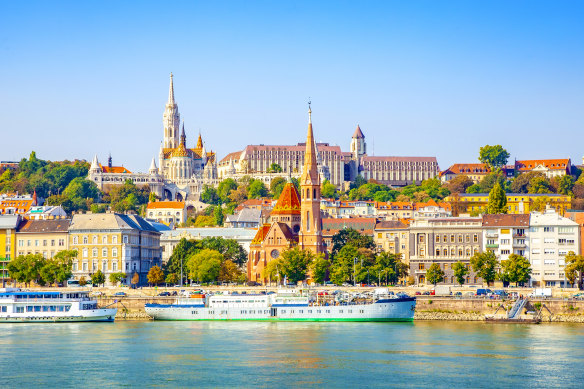
Distances between river ports are short in Europe.Credit: Getty Images
Distances between river ports are short in Europe and you’ll have every opportunity to spend most days, and sometimes evenings, off the ship. The equivalent of an ocean cruise’s day at sea is rare except on the Lower Danube. European riverbanks are crammed with old towns and great cities, cathedrals and castles. Don’t expect dramatic landscapes except in spurts, such as the Rhine Gorges in Germany, or Djerdap Gorge (Iron Gate) in Serbia-Romania. You will however be enveloped in loveliness much of the time.
In America and Asia, distances are greater, so you’ll do more night sailing and spend more time on board. River ships aren’t constrained by Europe’s narrow locks and low medieval bridges, so are often larger with roomier cabins.
As most American river cruises operate in the Midwest, often low-lying landscapes aren’t dramatic, but the Snake-Columbia River in the north-west has epic semi-desert and gorge scenery.
Asia has some grand scenery, too, such as the Yangtze Three Gorges in China and stretches of rivers in India near the Himalayas. But Asia particularly stands out for the spectacle of passing local life: ferries, sampans, devotees at prayer, school children waving from bridges, and farmers busy in fields.
When is peak season for river cruising?
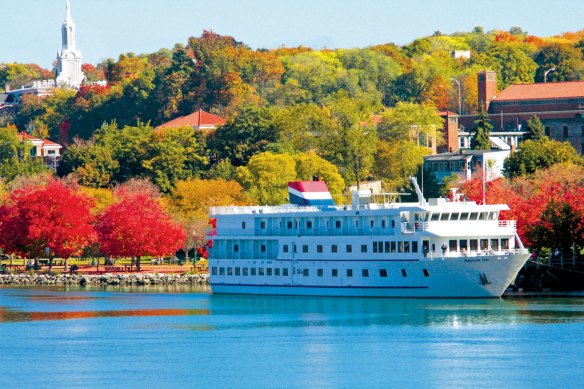
Most river cruisers are retirees who avoid traditional peak seasons.
Glad you asked because the busiest and most expensive season for river cruising in Europe isn’t what you might expect.
Why? Because very few river cruises cater to the family market, so school holidays are almost irrelevant. Most river cruisers are retirees who avoid traditional peak seasons.
That makes the most in-demand, highest-fare months May, June and September. July and August are better priced, but savings will be soaked up by higher airfares and hotel costs at this time.
In short, you’ll get the best fares in March, April and October. Some companies are however now offering winter cruises too, such as Viking’s new Treasures of the Danube cruise in January, February and March.
In the US, you can expect little significant monthly difference in the price of river cruises, since most only operate between the all-peak period mid-June to late September.
On the Mekong and Irrawaddy in Asia, the cool season between November and February costs more, so you’ll find big savings if you can bear the hot season.
Finally, everyone wants to sail the Nile River in cooler October-January, which means a significant drop in cost during the May-September hot season – though it is at least a dry heat.
Will I be bored on a smaller cruise ship?
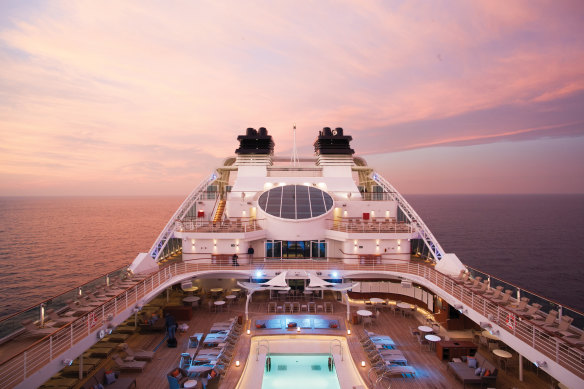
No waterslides, but mid-sized ships have full-service spas, pools, casinos, and theatres and more.Credit: Seabourn
Those considering a cruise for the first time worry that there’ll be nothing to do on board. True enough: you don’t have to shop, cook, wash up, vacuum or repack a suitcase. Is that a problem?
Admittedly, only on big ships will you be able to plunge down waterslides, ride surf simulators, attend big Broadway-style productions, and make use of expansive kids’ clubs.
But if you’re an empty-nester considering a smaller, more upmarket line, you need have little concern. Mid-sized ships have full-service spas, pools, casinos, and theatres for evening shows by singers, pianists and magicians.
On days at sea, enhancement programs might include lectures by historians or other experts, cooking classes, and lessons in bridge, photography, cocktail-making or other subjects.
Remember that you’ll be off the ship much of the time while in port, with plenty to see and do. You can minimise days at sea by choosing a cruise destination with close-together ports, such as the Mediterranean, Caribbean or New Zealand.
A cruise, like any other holiday, can be jam-packed with action, entertainment and non-stop socialising. Or it can be about slowing down, de-stressing and escaping the fast pace of daily life. Only the dull will be bored.
How can I bag a bargain on a river cruise?
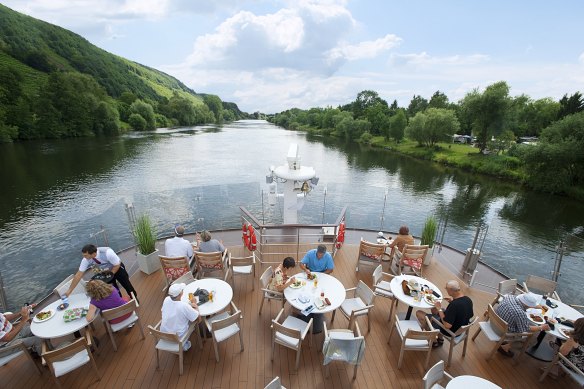
Gratuities are generally included in Europe but not in Asia or America.Credit: Viking
Cruising has become so popular that low prices are hard to come by. The cardinal rule would be to book well in advance.
Twelve months or more has become the norm for what cruise companies call preview campaigns that offer discount enticements on itineraries that have just been released to the public for sale.
Travel is only getting more expensive, so another incentive to book early is that most cruise companies guarantee current prices once you’ve paid a deposit. You’ll likely save on flights, too, by planning ahead.
Otherwise, sign up for the newsletters or emails sent out by cruise companies and specialist travel agents, as these will alert you to any special offers such as early-bird discounts, spot sales, or added bonuses such as included flights or a waiver of solo supplements.
Why be faithful to one brand? It pays to compare among cruise companies, and happily this is somewhat easier on river than on ocean cruises, since river-cruise lines operate near-identical itineraries and are mostly all-inclusive except on budget ships.
You’ll probably pay extra only for airport transfers, premium drinks, or drinks beyond meal times. Gratuities are generally included in Europe but not in Asia or America.
What is double docking on a river cruise?
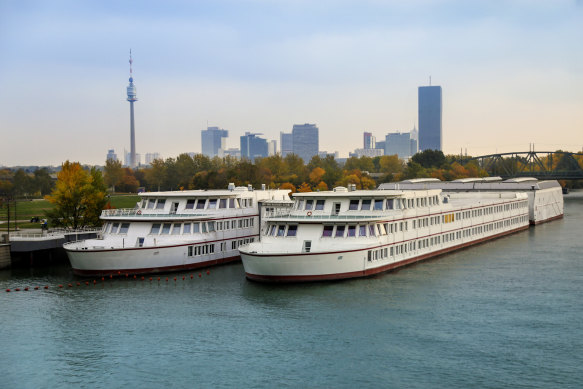
Double docking can mean guests lose privacy and have to clamber through other ships to get ashore.Credit: Getty Images
Double docking, or rafting, is the unfortunate necessity for river ships to tie themselves together at docks, leaving a hand-span between one cabin window and another. Guests lose privacy and sunlight, and are obliged to clamber through other ships to get ashore.
Nearly 400 river ships now ply Europe’s rivers and dock spaces are limited. Docks are usually the responsibility of local municipalities, and berths allocated by the dock master. No company is exempt from rafting, which is particularly common on the Rhine and Danube, and in cities elsewhere such as Bordeaux and Porto.
You can’t avoid rafting, so might as well gracefully accept it. Take advantage when walking through other ships to check out the competition. In the spirit of making the most of it, I once accepted a glass of wine from inter-ship dockers in Budapest and fell into agreeable conversation.
Rafting doesn’t happen always and, anyway, you’ll likely be off the ship most of the day. Just make sure you don’t spring out of your morning shower to discover another river ship right outside your cabin window. There are some sights cruise passengers really don’t want to see while floating through Europe.
What happens to old cruise ships?
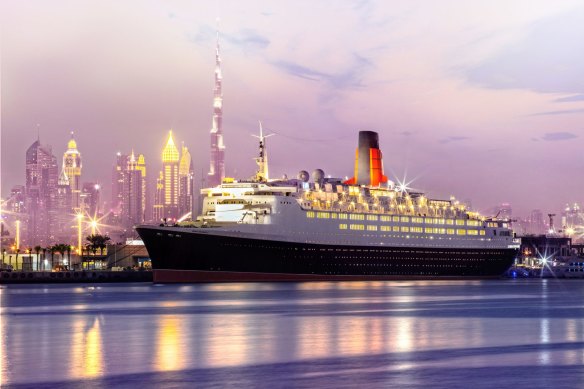
The iconic Queen Elizabeth 2 repurposed into floating Dubai hotel QE2.
Cruise ships eventually become too old-fashioned, too eco-unfriendly, too unseaworthy or too expensive to operate. In developed countries, cruise ships are in advanced old age at 30.
After a name change, cruise ships can be passed on to budget companies or operators in companies in countries like Russia or China. Some might be used as overnight passenger or car ferries.
Others are repurposed as convention centres, dormitories for asylum seekers or remote construction workers, restaurants, hotels, or movie sets. One of the most notable is Cunard’s Queen Elizabeth 2, which retired in 2008 and eventually re-emerged as a Dubai hotel.
Meanwhile, a few are moored as museums, such as the luxe 1930s liner Hikawa Maru in Yokohama.
Most cruise ships come to an ignoble end when they’re pulled apart and sold for scrap metal. The most notorious scrapyards are on the Indian subcontinent, where ships are beached and unceremoniously cut up by armies of underpaid, unprotected workers.
Occasionally, ships that run aground during operations are left in place. If they stick above the water, they can become tourist attractions, such as World Discoverer in Solomon Islands. If sunken, they become dive sites, such as Bianca C in Granada.
Sign up for the Traveller newsletter
The latest travel news, tips and inspiration delivered to your inbox. Sign up now.